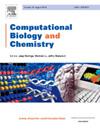Investigations on bioactive compounds of Punica granatum and Beta vulgaris for breast cancer treatment: Network pharmacology predictions, molecular docking, and in-vitro experimental verification of radiation-sensitizing effects
IF 2.6
4区 生物学
Q2 BIOLOGY
引用次数: 0
Abstract
Breast cancer represents a significant worldwide health concern for women. Anthocyanin-rich Punica grantum and Beta vulgaris extracts have shown promising anticancer effects. The network pharmacology predictions are used to recognize the bioactive compounds screening of anthocyanins, along with their molecular pathways and targets implicated in breast cancer. The present work includes molecular docking results, the discovery of three potent compounds that can bind strongly to important breast cancer proteins. In vitro experiments were performed in MDA-MB-231 cells to confirm the cytotoxicity and antiproliferative effects of anthocyanin-rich extracts derived from Punica grantum and Beta vulgaris. Also, in-vitro radiation-sensitive studies were done in Low-dose X-rays which paves a new advancement in enhancing Radiotherapy treatment of breast cancer. Current findings indicate that radiation sensitizers are associated with consolidating the pharmacological structure of anthocyanins and specific molecular pathways. Further aspects of natural radiation modifier development for cancer patients undergoing radiation therapy are suggested.
石榴和甜菜治疗乳腺癌生物活性化合物的研究:网络药理学预测、分子对接、辐射增敏作用的体外实验验证
乳腺癌是全世界妇女健康的一个重大问题。富含花青素的石榴和甜菜提取物具有良好的抗癌作用。网络药理学预测用于识别花青素的生物活性化合物筛选,以及与乳腺癌相关的分子途径和靶点。目前的工作包括分子对接结果,发现了三种强有力的化合物,可以与重要的乳腺癌蛋白紧密结合。通过MDA-MB-231细胞体外实验,证实了石榴和甜菜花青素提取物的细胞毒性和抗增殖作用。此外,在低剂量x射线下进行了体外辐射敏感性研究,这为加强乳腺癌放疗治疗奠定了新的进展。目前的研究结果表明,辐射致敏剂与巩固花青素的药理学结构和特定的分子途径有关。对癌症患者放射治疗的天然放射调节剂的进一步开发提出了建议。
本文章由计算机程序翻译,如有差异,请以英文原文为准。
求助全文
约1分钟内获得全文
求助全文
来源期刊

Computational Biology and Chemistry
生物-计算机:跨学科应用
CiteScore
6.10
自引率
3.20%
发文量
142
审稿时长
24 days
期刊介绍:
Computational Biology and Chemistry publishes original research papers and review articles in all areas of computational life sciences. High quality research contributions with a major computational component in the areas of nucleic acid and protein sequence research, molecular evolution, molecular genetics (functional genomics and proteomics), theory and practice of either biology-specific or chemical-biology-specific modeling, and structural biology of nucleic acids and proteins are particularly welcome. Exceptionally high quality research work in bioinformatics, systems biology, ecology, computational pharmacology, metabolism, biomedical engineering, epidemiology, and statistical genetics will also be considered.
Given their inherent uncertainty, protein modeling and molecular docking studies should be thoroughly validated. In the absence of experimental results for validation, the use of molecular dynamics simulations along with detailed free energy calculations, for example, should be used as complementary techniques to support the major conclusions. Submissions of premature modeling exercises without additional biological insights will not be considered.
Review articles will generally be commissioned by the editors and should not be submitted to the journal without explicit invitation. However prospective authors are welcome to send a brief (one to three pages) synopsis, which will be evaluated by the editors.
 求助内容:
求助内容: 应助结果提醒方式:
应助结果提醒方式:


